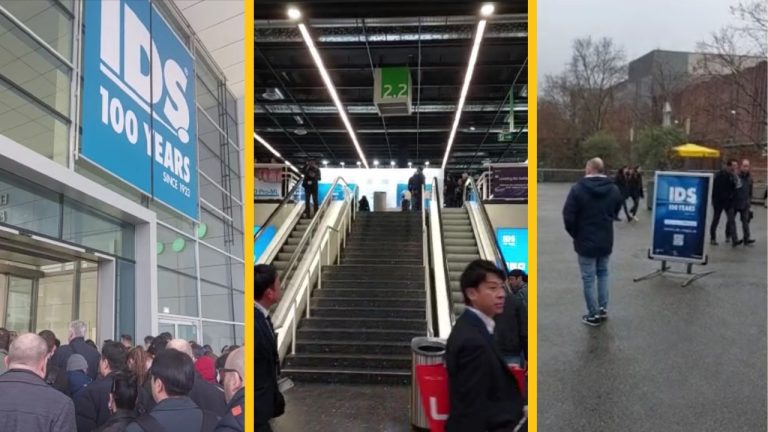Enquire Form
The Role of Pressure Moulding in Modern OrthodonticSolutions

Pressure Moulding is a process in which a thermoplastic material is heated and
moulded under Pressure to create a 3D object. Pressure Moulding is widely
used in Dentistry. It is mainly used in the manufacturing of orthodontic
appliances such as aligners, retainers, mouthguards, and more. This process
is employed to fabricate custom dental appliances that conform precisely to
the contours of a patient’s teeth and gums. In this blog, we will explore the role
of Pressure Moulding in modern orthodontic solutions, discussing its benefits,
functionality and future prospects based on current research findings.
How Does Pressure Moulding Work in Dentistry?
In Dentistry, the primary materials used in Pressure Moulding include Ethyl
Vinyl Acetate, Thermoplastic Polyurethane, Polyethylene, Polypropylene,
Polycarbonate etc. These materials show biocompatibility and flexibility. They
perform the required function in minimal thickness while being aesthetically
acceptable. Such properties make these materials ideal for use in
orthodontics.
The Pressure Moulding process involves many key steps, such as:
- Preparation of the Dental Cast: A dental impression is taken through an
impression material or digital scanning to create an exact model of the
patient’s dentition. - Material Selection: The dental professional selects a proper thermoplastic
material based on the type and purpose of the appliance. - Heating the Material: The selected thermoplastic material is placed in the
Pressure moulding thermoforming machine. It is heated until it reaches a
malleable state. - Moulding: The heated material is then placed over the dental cast, and
Pressure is applied to make sure that the material conforms or moulds to the
contours of the cast. - Cooling and Trimming: After thermoforming, the material is cooled.1 This
prevents distortion of the formed appliances. It is then removed from the
mould, and excess material is trimmed away, resulting in a personalised dental
appliance.
Positive Pressure vs. Vacuum Pressure Thermoforming:
Positive Pressure and Vacuum Pressure thermoforming are two of the most
common types of pressure moulding techniques used in dentistry. Both
techniques involve heating a plastic sheet and forcing it into a mould to create
the desired shape. However, they differ in the way pressure is applied.
In Positive Pressure Thermoforming, pressure is applied via mechanical force
after heating the plastic. This technique is used to manufacture appliances
which are thicker and more complex. Dentures and Splints are some of the
appliances made with positive pressure thermoforming.
In Vacuum Pressure Thermoforming, once the plastic is heated, a vacuum is
applied, which sucks the plastic down to adapt to the moulding surface of the
cast. Aligners, Retainers and Custom trays are commonly made using Vacuum
Pressure Thermoforming.
Advantages of Pressure Moulding in Dentistry:
Pressure Moulding has offered multiple advantages and customisation options
to dental professionals, which has, in return, resulted in growth in many
streams of Dentistry. Some of the advantages are as follows: - Precision and Custom Fit
The ability to produce accurate and personalised appliances is one of the
primary benefits of Pressure Moulding technique. Pressure Moulding allows for
a better fit, which is important for the success of orthodontic treatment - Comfort
The smooth finish and custom contours of pressure moulded appliances give
comfort to patients. Patients wear their appliances with ease as advised by the
dentist and are more likely to follow instructions given by the dentist. - Looks
The use of clear thermoplastic materials in Pressure Moulding allows for the
creation of good-quality aesthetic appliances. This is important for adult
patients and teens who are conscious of their looks during dental treatment.
Clear aligners, for example, are almost invisible and can be worn with
confidence in social situations. - Versatility
Pressure Moulding can be used to make a broad range of dental appliances,
including retainers, aligners, mouthguards, and functional appliances. This
versatility makes it a useful technique for dentists, allowing them to manage
different patient needs with a single manufacturing method. - Efficiency in Production
The Pressure Moulding process is relatively quick, which allows dental
professionals to produce custom-made appliances in a shorter timeframe.
This leads to quick in-house production of the appliances without longer
waiting times for patients. It can improve patient satisfaction, as they can get
their appliances without any delays.
Future Directions in Pressure Moulding and Orthodontics
Research continues to explore new materials and methods that can take less
time and are more effective for this technique. Some potential future
developments include: - Biodegradable Materials
The development of biodegradable thermoplastic materials
for pressure
moulding could lead dentistry towards more sustainable practices balancing
the environmental concerns.
- 3D Printing Integration
The integration of 3D printing technology with thermoforming through pressure
moulding may allow for even greater precision and customisation in
orthodontic appliances, reducing waste and improving turnaround times.
- Digital Workflow Enhancements
The continued advancement in digital scanning, along with 3D models and
Pressure Moulding technologies, will streamline and increase the efficiency of
the digital dental workflow to provide treatment with great accuracy.
Summary
Pressure moulding is a vital technique in modern dentistry, offering marked
benefits by fabricating appliances that offer precision, comfort, and aesthetic
appearance. Because of the versatility of Pressure Moulding, dental
professionals can fabricate a wide range of customised dental appliances,
satisfying the growing demands of their patients. As technology continues to
develop, we can expect Pressure Moulding to grow further and offer superior
results while expanding the scope of its applications.
References:
1 – Takahashi M, Bando Y. Thermoforming technique for maintaining the thickness of
single-layer mouthguard during pressure formation. Dent Traumatol. 2019;35(4-5):285-
- doi:10.1111/edt.12472.
2 – Johal A, Sharma NR, McLaughlin K, Zou LF. The reliability of thermoform retainers: a
laboratory-based comparative study. Eur J Orthod. 2015;37(5):503-507.
doi:10.1093/ejo/cju075.
3 – S.C. Onwubu, P.S. Mdluli, Singh S, Thakur S. Biodegradable natural materials in dentistry:
fiction or real? Elsevier eBooks. Published online January 1, 2021:77-88.
doi:https://doi.org/10.1016/b978-0-12-820484-9.00003-9.
Know More About Us
SignUp To Our Newsletter And Get To Know More About Taglus
Copyrights@taglus-2025
*Taglus is a trademark of Vedia Solutions










Leave a Reply